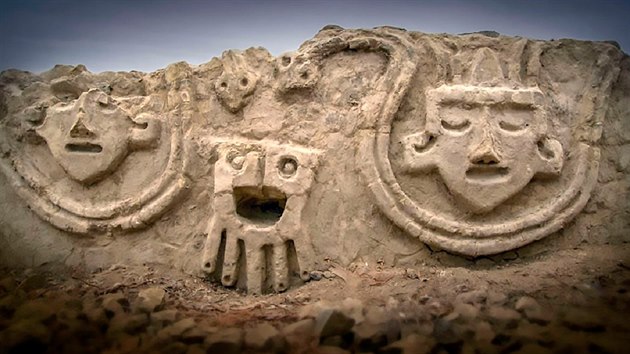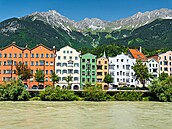Archeological sites in Peru
Ancient Inca tomb was discovered under home in Peru capital as well as passageways in 3,000-year-old Peruvian temple
Text pochází z agentury Reuters. |
Scientists have recently unearthed an Inca-era tomb in the heart of Peru’s capital Lima, a burial dug up under a working-class home and believed to hold noble remains wrapped in cloth alongside ceramics and fine ornaments
The lead archeologist Julio Abanto told Reuters the 500-year-old tomb contained „multiple funerary bundles“ tightly wrapped in cloth. He said the entombed were likely elites from the Riricancho society, a culture that once populated present-day Lima before the powerful Inca came to rule a sprawling empire across the length of western South America in the 1400s. Famed for their gold and sophisticated constructions, including the mountaintop royal retreat of Machu Picchu, the Inca were conquered by Spanish invaders in 1532. Hipolito Tica, the owner of the house in Lima, said in an interview he was overcome with emotion at the surprise find.
„It’s amazing. I really have no other words to describe it,“ he said, expressing a hope that future generations in the working-class San Juan de Lurigancho neighborhood will better appreciate the rich history all around them. Excavations began in May after Tica’s reconstruction plans for his property triggered a required archeological survey in a Lima district known for hundreds of past archeological finds from cultures that developed before and after the Inca. A team of archeologists also discovered a network of passageways under a more than 3,000-year-old temple, Chavin de Huantar, in the Peruvian Andes. The passageways were found earlier in May and have features believed to have been built earlier than the temple’s labyrinthine galleries, according to John Rick, an archeologist at Stanford University who was involved in the excavation.
Slovíčkaunearth objevit, odkrýt Inca-era tomb hrobka z období Inků burial dug up vykopané pohřebiště noble remains ostatky šlechtického původu alongside sth současně s čím ornament ozdobný předmět funerary bundle pohřební svazek, uzlík entomb pohřbít present-day současný, dnešní sprawling empire rozlehlá říše mountaintop vrchol hory retreat útočiště, úkryt conquer sth dobýt co invader nájezdník overcome with emotions dojatý emocemi excavation vykopávka, odkrytí trigger spustit, vést k čemu network of passageways síť chodeb temple chrám, svatyně connect propojit foothills úpatí, předhůří take sb hostage vzít koho jako rukojmí range from… to sahat od… až po |
Located 3,200 meters above sea level, at least 35 underground passageways have been found over the years of excavations, which all connect
with each other and were built between 1,200 and 200 years B.C. in the foothills of the Andes.
„It’s a passageway, but it’s very different. It’s a different form of construction. It has features from earlier periods that we’ve never seen in passageways,“ Rick said.
Chavin de Huantar, declared a World Heritage Site in 1985, was the inspiration and name of the operation carried out when the Peruvian armed forces built a network of tunnels to rescue 72 people taken hostage by the Tupac Amaru Revolutionary Movement rebel group at the Japanese ambassador’s residence in Lima in 1997.
Peru is home to hundreds of archeological sites of cultures that developed before and after the Inca Empire, which 500 years ago dominated the southern part of the continent, ranging from southern Ecuador and Colombia to central Chile.
NAUČTE SE GRAMATIKU Z TEXTUV dnešním článku jsme se setkali se spojením each other, ve větě: „… at least 35 underground passageways have been found over the years of excavations, which all connect with each other…“ Each other je zájmeno, kterým v angličtině vyjadřujeme vzájemnost. Používáme ho, když dvě strany dělají něco navzájem, např. „This might be the last time we see each other.“ Česky ho můžeme přeložit jako se, spolu nebo navzájem. Zájmeno each other se často používá po předložce, např. „Dolphins use sound to communicate with each other.“ Běžné je i použití each other jako přivlastnění, např. „We have each other’s wallets.“ Přeložte (řešení na konci článku): 1. Známe se posledních deset let. 2. Neviděli jsme si navzájem do obličeje. 3. Archeologové spolu diskutovali o té záležitosti. |
Lekci připravila Englishka.cz.
Řešení: 1. We have known each other for the last ten years. 2. We didn’t see each other’s face(s). 3. The archeologists discussed that matter with each other.














